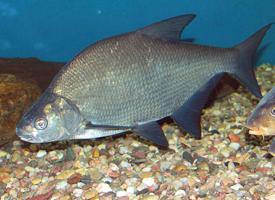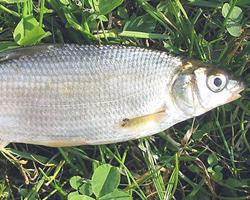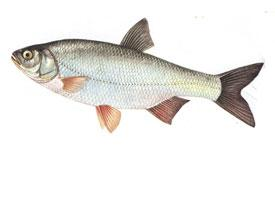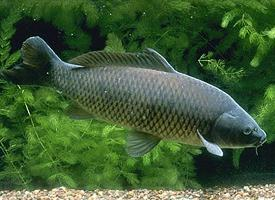
Súlyok és méretek
| Hossz | 30-tól 95-ig cm |
|---|---|
| Súly | 0,5-tól 10-ig kg |
Biológiai adatok
| Élettartam | 30 r |
|---|
Állatleírás
The Common bream (Abramis brama), also known simply as bream, is a species of freshwater fish belonging to the Cyprinidae family, which is widely distributed across Europe and parts of Asia. This species is of significant interest not only to anglers but also to environmentalists and aquatic ecologists due to its role in freshwater ecosystems and its sensitivity to environmental changes.Physical Description:
The Common bream is easily recognizable by its high, laterally compressed body which gives it a rather deep appearance, somewhat resembling a disc. This body shape is particularly effective for navigating the slow-moving, often vegetated waters they prefer. Adult specimens typically display a silvery-bronze coloration that glistens beautifully under sunlight, though juveniles are more silvery in appearance. The fish's scales are relatively large and its fins, especially the dorsal and anal fins, are long and almost mirror each other in shape, aiding in its graceful, gliding movements through the water.
One of the most distinguishing features of the Common bream is its mouth. Positioned at the end of a slightly protruding snout, the mouth is small and somewhat downturned, specialized for bottom-feeding. This fish has a set of fine, brush-like gill rakers that are adapted for filtering out small particles of food from the water.
Size:
The size of the Common bream can vary considerably depending on environmental conditions, but adults typically range from 30 to 55 cm in length, with some specimens reaching up to 75 cm. The weight of these fish usually falls between 2 to 4 kilograms, although individuals weighing over 8 kilograms have been recorded.
Habitat and Distribution:
Common bream are found in a variety of freshwater habitats, including lakes, rivers, and canals. They have a preference for waters that are slow-moving and rich in vegetation, where they can easily forage for food. These fish are highly adaptable and can survive in environments ranging from clear waters with sandy bottoms to turbid, muddy environments. Their distribution spans across Europe and extends into Asia, from the British Isles eastwards towards the Caspian Sea.
Diet:
The diet of the Common bream is quite varied, reflecting its opportunistic feeding habits. It primarily feeds on the bottom, consuming a diet that includes invertebrates, such as insect larvae and worms, as well as plant matter and detritus. The fish's feeding behavior plays a crucial role in the cycling of nutrients within its habitat, contributing to the overall health of the aquatic ecosystem.
Reproduction:
Spawning occurs in late spring to early summer when water temperatures reach around 15-20°C. Females release their eggs among submerged vegetation, where they are fertilized by males. A single female can lay up to hundreds of thousands of eggs, which hatch in a few days depending on the temperature. The survival rate of the larvae is influenced by various factors, including predation and availability of food.
Conservation Status:
The Common bream is currently not considered to be at risk of extinction and is classified as Least Concern by the IUCN Red List. However, like many freshwater species, it faces threats from habitat degradation, pollution, and the impacts of climate change. Conservation efforts aimed at preserving freshwater ecosystems are crucial for the continued survival of the Common bream and countless other species that share its habitat.
In summary, the Common bream is a fascinating and important freshwater species with a distinctive appearance and ecological role. Its presence in European and Asian waters underscores the rich biodiversity of these regions and highlights the importance of conserving aquatic habitats for future generations.
Hasonló állatok
Új állatfotók
Top 10 állat
- Dolphin gull (Leucophaeus scoresbii)
- Japanese macaque (Macaca fuscata)
- Stone loach (Barbatula barbatula)
- Russian tortoise (Testudo horsfieldii)
- Galápagos tortoise (Geochelone nigra complex)
- Greek tortoise (Testudo graeca)
- Diana monkey (Cercopithecus diana)
- Common flying dragon (Draco volans)
- Moustached guenon (Cercopithecus cephus)
- Galápagos penguin (Spheniscus mendiculus)


